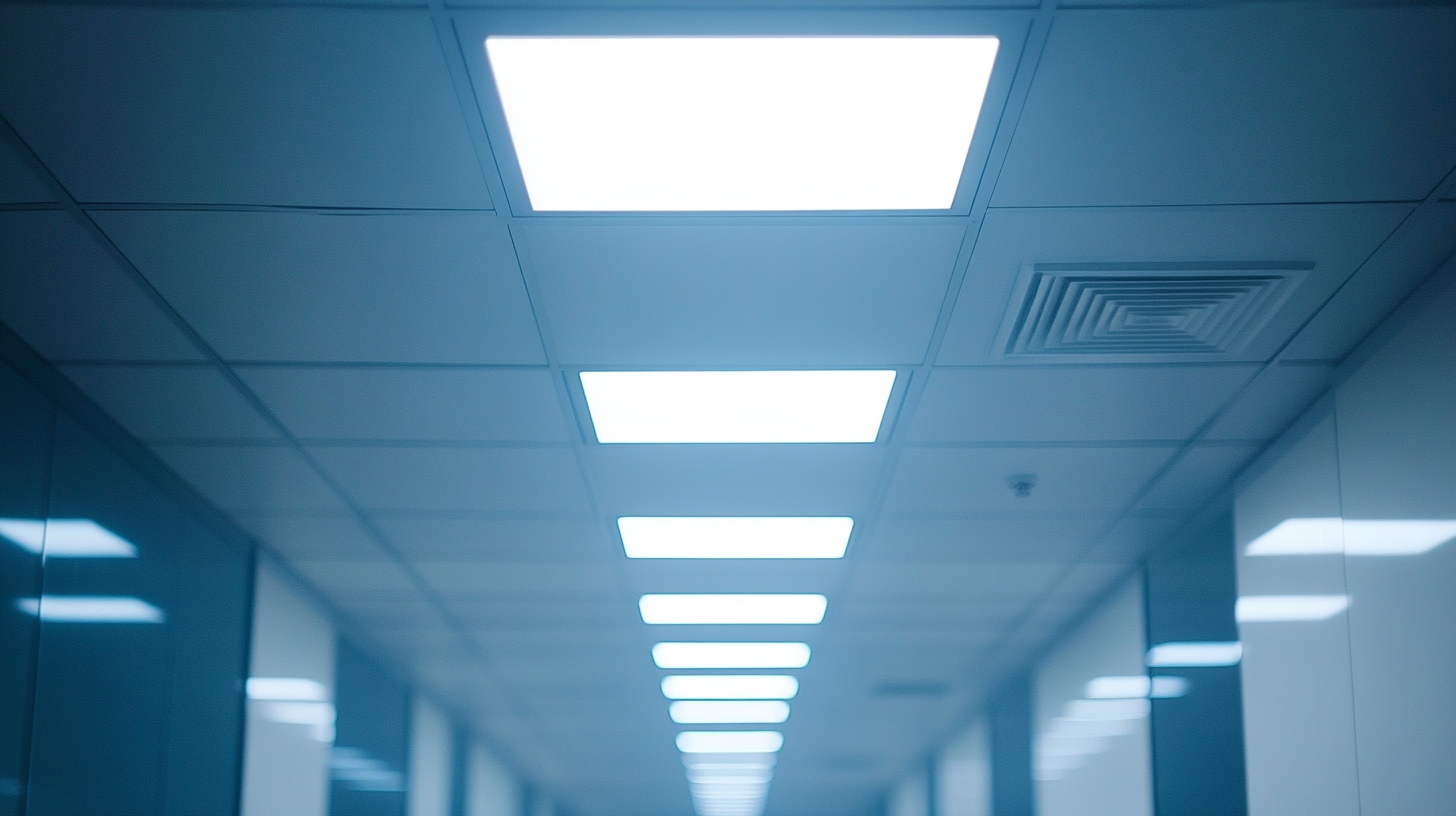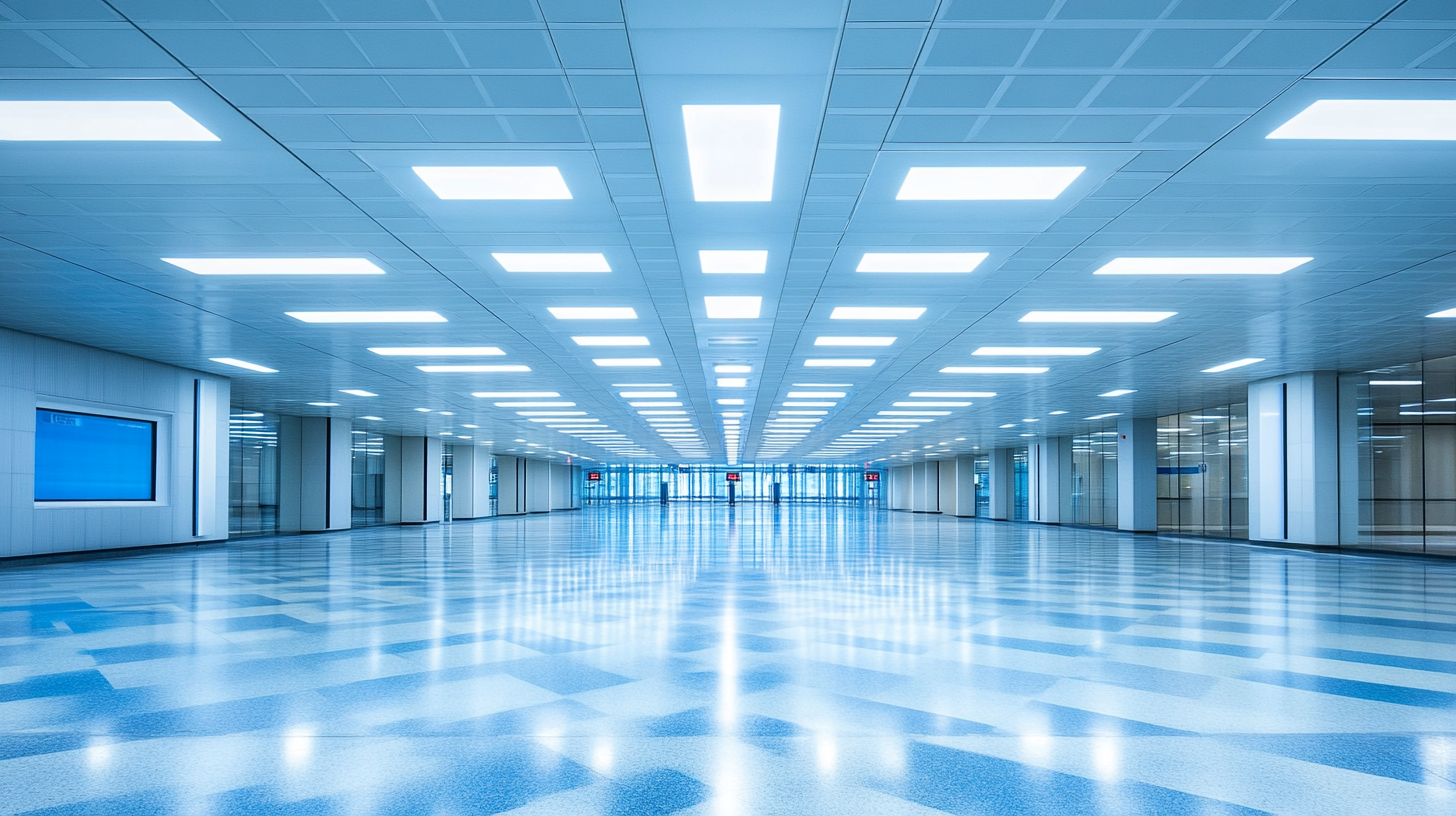Unlocking Energy Efficiency: The Future of Commercial LED Solutions for Global Buyers
As the global demand for sustainable solutions continues to rise, businesses are increasingly seeking innovative ways to reduce energy consumption and minimize their environmental footprint. Among the various milestones in energy efficiency, Commercial LED technology stands out as a revolutionary shift in lighting solutions for businesses of all sizes. With advancements in LED technology and a growing emphasis on sustainability, the future of commercial lighting is being fundamentally transformed, providing both economic and ecological benefits.
In this blog, we will explore the vast potential of Commercial LED solutions, highlighting their advantages in energy savings, longevity, and versatility. We will also discuss how these cutting-edge lighting systems can help organizations not only meet regulatory standards but also enhance their brand image and operational efficiency. Join us as we unlock the future of energy efficiency, delving into why commercial buyers should embrace this remarkable technology now and in the years to come.

The Rise of Commercial LED Solutions: Transforming Energy Efficiency
The rise of commercial LED solutions is revolutionizing energy efficiency across industries, setting new standards for sustainable practices. According to a report by the U.S. Department of Energy, LED lighting has the potential to reduce energy usage for lighting by over 50% by 2035, translating to savings of approximately $30 billion for commercial buildings annually. This significant reduction not only lowers operational costs but also minimizes the carbon footprint associated with energy consumption. Moreover, the global LED market is projected to reach over $100 billion by 2025, driven by growing awareness and demand for energy-efficient solutions in commercial settings. Businesses are increasingly adopting LED technologies not just for their longevity—LEDs can last up to 25 times longer than incandescent bulbs—but also for their ability to provide high-quality light that enhances work environments. This transformation is particularly noticeable in sectors such as retail, education, and hospitality, where improved lighting impacts customer experience and employee productivity. In addition, advancements in smart LED technologies are further amplifying energy efficiency. The integration of IoT with LED lighting systems allows for real-time monitoring and intelligent control, ensuring lights are used only when and where they are needed. Reports indicate that smart lighting systems can lead to energy savings of up to 70%, significantly contributing to corporate sustainability goals. As global buyers seek viable solutions to combat climate change and reduce energy costs, commercial LED innovations stand out as effective measures for a sustainable future.

Key Advantages of LED Technology for Global Enterprises
The commercial landscape is rapidly evolving, with energy efficiency becoming a top priority for global enterprises. The advantages of LED technology are numerous, making it an essential consideration for businesses aiming to enhance their sustainability efforts. According to recent reports, the shift to LED solutions can result in energy savings of up to 75% compared to conventional lighting options, significantly reducing operational costs over time. This transition not only benefits the bottom line but also contributes to the broader goal of achieving sustainable development as outlined by the UN’s Sustainable Development Goals.
In regions like the Middle East, where data center investments are surging—particularly in the UAE and Saudi Arabia—energy-efficient technologies are imperative. With the increasing reliance on data centers powered by AI-driven strategies, adopting LED lighting within these facilities can enhance overall energy performance and facilitate a more resilient supply chain. As industries prioritize efficiency in their operations, integrating advanced LED solutions aligns with the objectives of minimizing carbon footprints while ensuring optimal functionality.
Moreover, connected lighting technologies provide additional benefits beyond mere efficiency. These systems can improve working conditions and boost productivity within commercial environments. As companies seek innovative ways to deliver a sustainable competitive advantage, the implementation of LED technology serves as a critical component in navigating the complexities of modern business demands, ensuring both environmental responsibility and operational excellence.

Sustainable Practices: How LEDs Contribute to Environmental Goals
As businesses around the globe increasingly prioritize sustainability, the role of LED lighting has become pivotal in achieving environmental goals. According to a report by the U.S. Department of Energy, LED lights use at least 75% less energy than incandescent lighting and last 25 times longer, significantly reducing greenhouse gas emissions. This remarkable energy efficiency translates into lower electricity consumption, allowing companies to not only cut costs but also reduce their carbon footprint substantially.
Moreover, LEDs enhance sustainability by minimizing waste. Traditional bulbs have a shorter lifespan, often leading to a higher number of discarded units contributing to landfill waste. Research from the National Renewable Energy Laboratory indicates that if all U.S. lighting were switched to LEDs, the total energy cost savings would amount to about $30 billion annually, while preventing 100 million metric tons of greenhouse gas emissions. This transformation to LED technology offers commercial buyers a chance to align their operational practices with global environmental initiatives.
Additionally, the growing focus on sustainable practices among consumers drives companies to adopt eco-friendly solutions. Analysis by McKinsey & Company reveals that 70% of consumers are willing to pay more for sustainable products. By investing in LED lighting, commercial entities not only embrace immediate operational benefits but also position themselves favorably in the market. This strategic move fosters a positive brand image, resonates with eco-conscious consumers, and ultimately supports broader social responsibility objectives.

Navigating the Market: Choosing the Right LED Solutions for Your Business
When it comes to enhancing energy efficiency in commercial spaces, LED solutions have emerged as a leading choice for businesses around the globe. However, navigating the vast market of LED products can be overwhelming for decision-makers. It's crucial to approach this journey with a strategic mindset. Begin by assessing your specific needs—consider factors such as the size of your space, the type of activities taking place, and existing lighting conditions. This analysis will ensure that you select the most effective LED options that align with your operational goals.
Once you’ve established your requirements, it’s time to explore the various types of LED solutions available. Commercial LEDs come in myriad forms, from high-bay lights for warehouses to recessed fixtures for office environments. Evaluating performance indicators such as lumen output, color temperature, and energy consumption will help you understand which products will deliver the best return on investment. Additionally, prioritize features that enhance versatility—smart lighting systems that adjust according to natural light or occupancy can significantly boost energy savings and productivity.
Furthermore, consider the importance of working with reputable suppliers who can offer comprehensive warranties and support. The right partner will not only provide quality products but also guidance on installation and ongoing maintenance. By collaborating closely with your supplier, you can ensure that your LED lighting system remains efficient and effective long-term. Making informed decisions about your LED solutions can lead to significant operational benefits and pave the way for a more sustainable future.
Future Trends: Innovations in LED Technology and Their Impact on Energy Savings
The commercial lighting sector is witnessing a paradigm shift fueled by advancements in LED technology. Forecasts from industry reports indicate that the global LED lighting market is expected to reach $105 billion by 2025, reflecting a compound annual growth rate (CAGR) of 13.4% from 2019 to 2025. These innovations not only promise increased brightness and longevity but also significant energy savings, which are becoming essential for businesses aiming to reduce operational costs and minimize their carbon footprint.
Recent innovations in LED solutions focus on smart lighting and tunable white technology, enabling businesses to tailor their lighting needs dynamically. According to a study by the U.S. Department of Energy, LED lighting can reduce energy consumption by up to 85% compared to traditional incandescent bulbs. This not only improves energy efficiency but also enhances the overall customer experience in commercial spaces by adjusting lighting conditions to optimal levels based on occupancy and time of day.
Further, the integration of IoT (Internet of Things) in LED technology facilitates real-time monitoring and control, paving the way for smarter energy management. A report by Allied Market Research reveals that the IoT-enabled LED segment is projected to witness a significant surge, with an estimated market value climbing to $24 billion by 2027. Such innovations will not only bolster energy savings for businesses but also drive sustainability initiatives globally, aligning perfectly with the increasing demand for green solutions in commercial operations.







